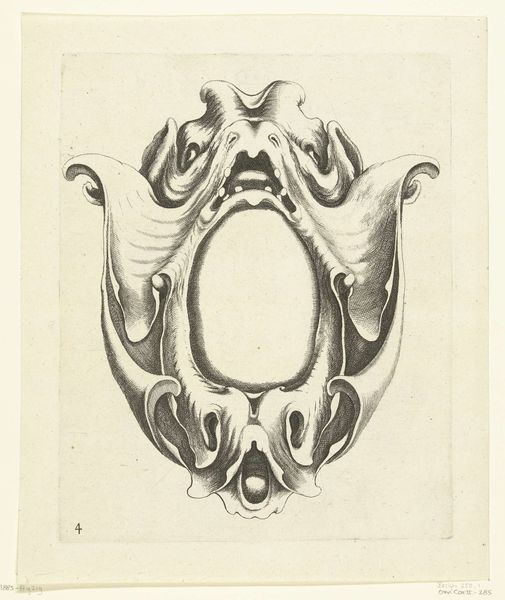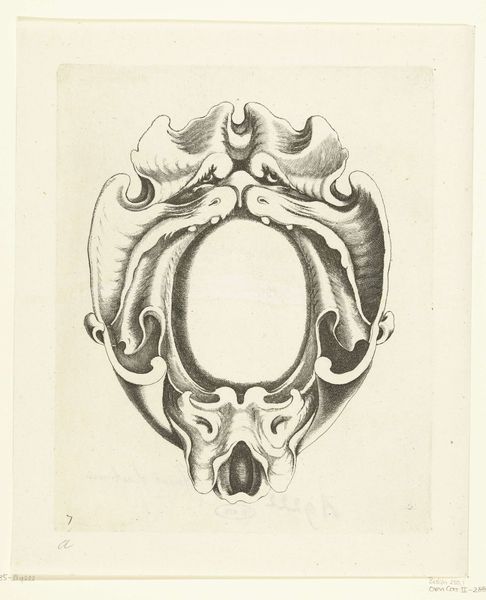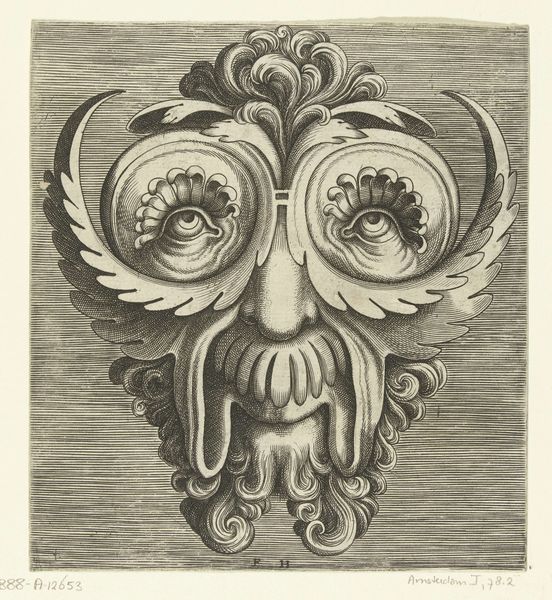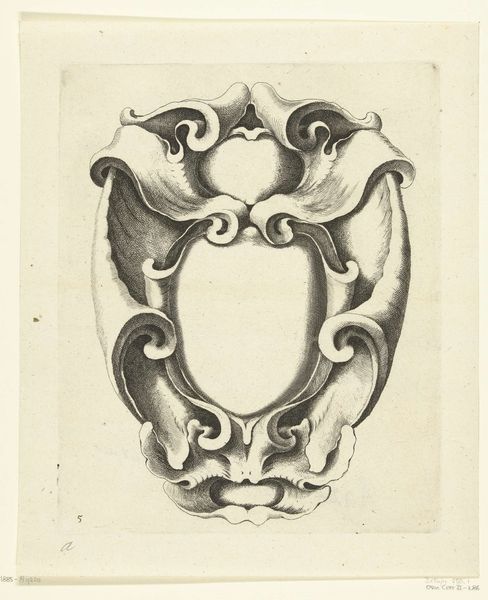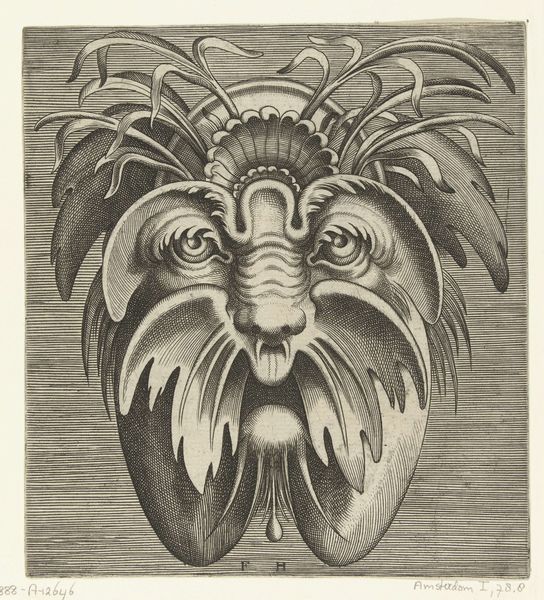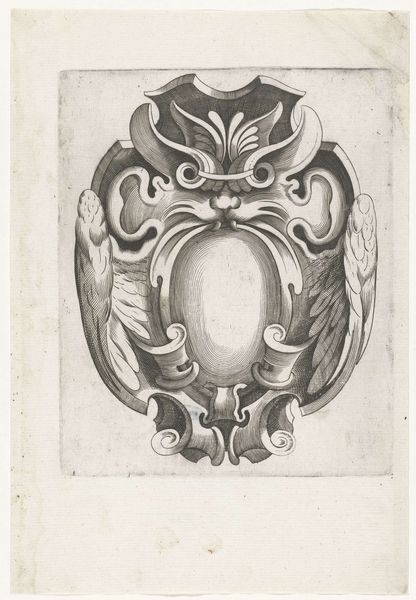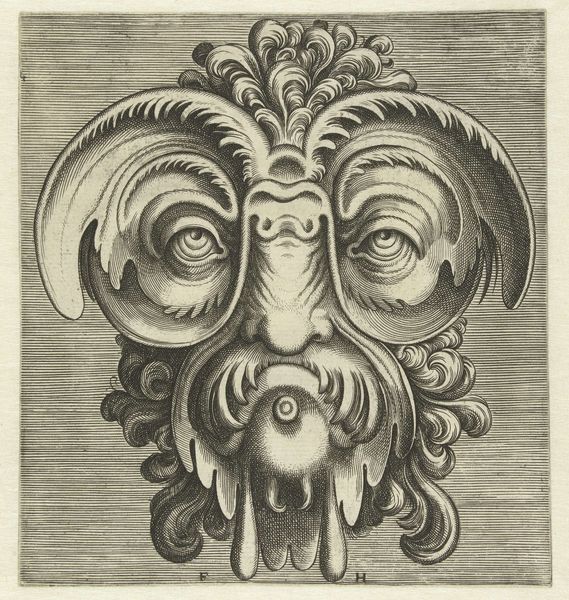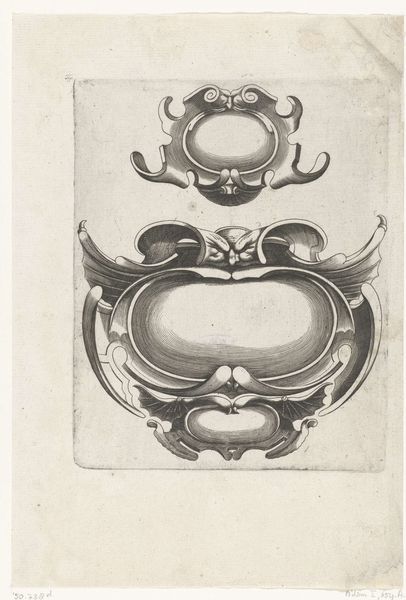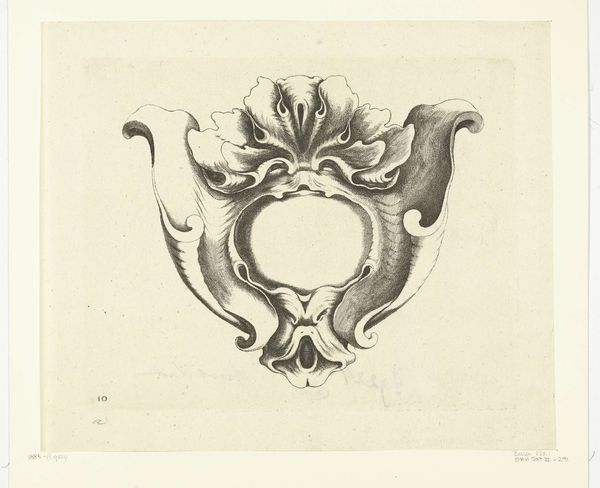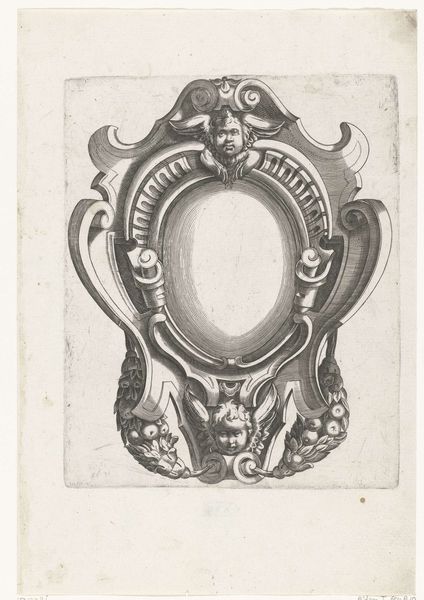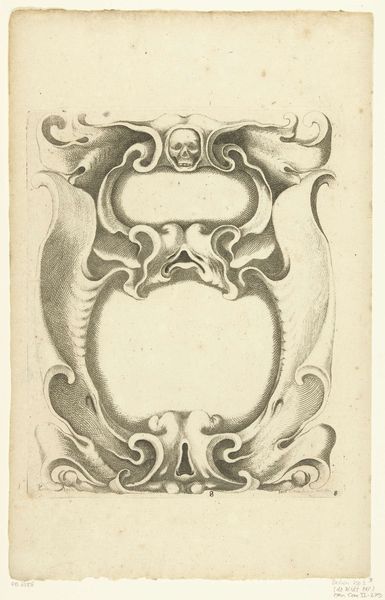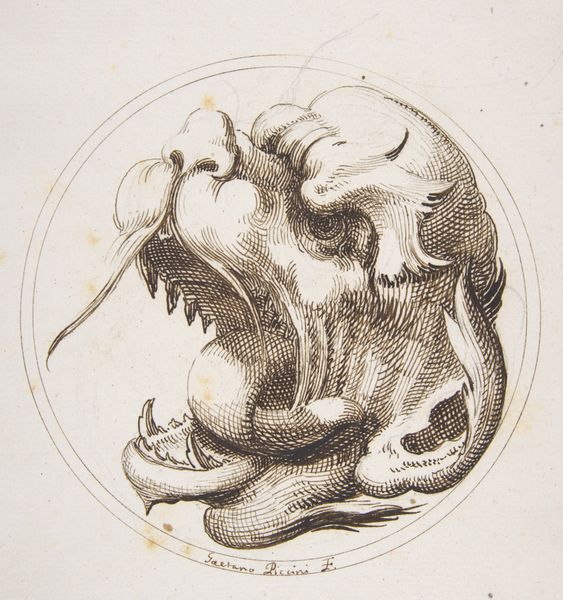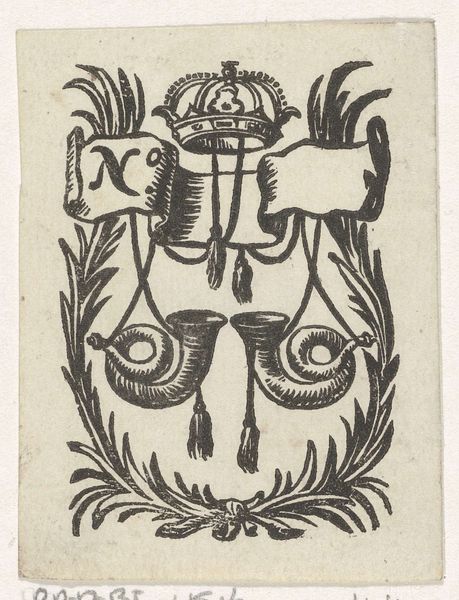
engraving
#
baroque
#
caricature
#
form
#
geometric
#
engraving
Dimensions: height 224 mm, width 176 mm
Copyright: Rijks Museum: Open Domain
Editor: This is “Cartouche met bovenaan en onderaan een masker,” by Jacob Lutma, made sometime between 1654 and 1678. It's an engraving, currently held at the Rijksmuseum. The detail is amazing! It's a symmetrical, almost grotesque face, framing nothing. What can you tell me about it? Curator: Well, let's consider the material reality of this print. Engraving, as a process, democratized art production in the 17th century. How does the availability of printed images impact the status of unique artwork versus more widely accessible art? Editor: So, it's about accessibility, making art available to more people? Curator: Precisely. And Lutma’s choice of subject – a cartouche – is itself significant. Cartouches, often framing inscriptions or coats of arms, were both architectural and decorative elements. So Lutma is reinterpreting, or perhaps democratizing, that association. Who had the access to heraldry or inscription and why is that power being mimicked or parodied in an inexpensive print? Editor: That makes me wonder, why make something so elaborate accessible through a printed image? Is it a comment on class or labor? Curator: Potentially, yes. It draws attention to the labor involved in both its original sculptural form – imagining the making of the decorative source! – and then the intricate engraving process that copies the form for wide circulation. Consider also, what impact does reproducibility have on the object's 'aura'? Editor: So, it is about value assigned through the artistic labour or its circulation more than a direct representation...I hadn't considered that. Curator: Exactly. It challenges us to examine how artistic meaning isn’t just inherent, but constructed through the interplay of material production, distribution, and social context. We now see artmaking not only as the production of form, but also the reproduction of it. Editor: I learned so much. Thank you! It changes my perspective. Curator: My pleasure! That is exactly the point of engaging in art like this.
Comments
No comments
Be the first to comment and join the conversation on the ultimate creative platform.
